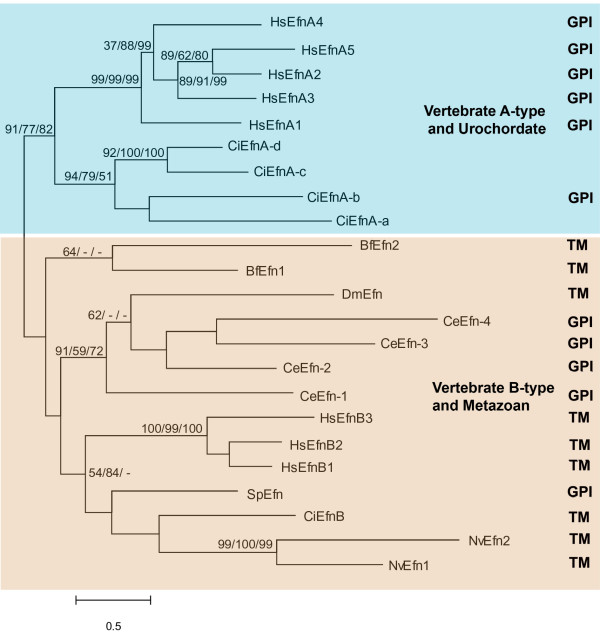Figure 2.
Phylogenetic tree for ephrin ligands constructed with Maximum Likelihood method. Numbers represent percentage bootstrap values for 1000 replicates (Maximum likelihood/Neighbour Joining/Minimum Evolution); unlabelled branches or/- indicates a value less that 50%. Two major clades are present: Vertebrate A-type and Urochordate ephrins and a group containing Vertebrate B-type, Cephalochordate, Ecdysozoan, Echinoderm, Coelenterate, Sponge and one Urochordate ephrin. Using the ecdysozoan branch to root the tree does not change the composition of the major groups. Efn, ephrin; Bf, Brachiostoma floridae; Ce, Caenorhabditis. elegans; Ci, Ciona intestinalis; Dm, Drosophila melanogaster; Hs, Homo sapiens; Nv, Nematostella vectensis; Sp, Strongylocentrotus purpuratus. Results of predictions for the type of membrane anchorage are aligned with individual branches; TM, transmembrane domains; GPI, glycosylphosphatidylinositol modification. Where no prediction is reported the protein prediction contains neither.

